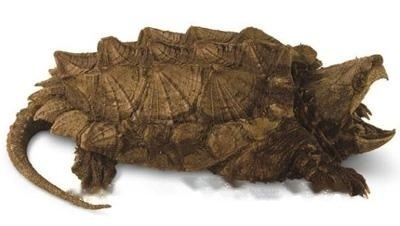
Snapping turtle
Real snapping turtles look like crocodiles fish, Set turtle and crocodile in one, so called true snapping turtle. Its head is relatively thick and cannot be completely retracted in
The Himalayan White-Headed SnakeSnake Also known as the white-headed viper, it is the most venomous of the 27 species of poisonous snakes in China. Himalayan white-headed snakes are mainly distributed in Yunnan, Guizhou, Sichuan, Tibet, Shaanxi, Gansu, Guangxi, Anhui, Jiangxi, Zhejiang, and Fujian in China. Other countries are located in Myanmar and northern Vietnam.
Chinese name: Himalayan white-headed snake
Kingdom: Animal Kingdom
phylum: Phylum Chordata
Subphylum: Vertebrata
Class: Reptilia
Subclasses: Diapsida, Lepidosauria
Order: Squamata has information classified as Serpentiformes
Suborder: Serpentes
Family: Viperidae
Subfamily: Subfamily White-headed Viper
Genus: Azemiops
Species: White-headed Viper
Distribution: China is mainly distributed in Yunnan, Guizhou, Sichuan, Tibet, Shaanxi, Gansu, Guangxi, Anhui, Jiangxi, Zhejiang, and Fujian. Other countries are located in Myanmar and northern Vietnam
The total length is 600~800mm. Poisonous snake with tube teeth, with short tube teeth, No cheek sockets. The back is dark brown, with 10-15+3-4 pairs of vermilion horizontal spots, the left and right horizontal spots are staggered or meet each other in the dorsal midline; the ventral surface is olive gray, scattered with small white spots. The head and nape are yellowish white with dark brown markings. The head and back have typical 9 large scales; preorbital scales 3(2), retroorbital scales 2; temporal scales 2+3(2); upper lip scales 6, 2-1-3 type; lower lip scales 8(7- 9), the first 3 (4) pieces are cut into the anterior jaw. The dorsal scales are smooth, 17-17-15 lines; the ventral scales are 168-205, the anal scales are intact, and the lower caudal scales are 39-53 pairs.
The white-headed viper lives in mountainous areas (about 1000 meters above sea level) and prefers cooler climates (about 20 to 25 degrees Celsius. Sometimes on roadsides, jungles, and shrubs) , and farmland, they will also be found in the fields, and they will even be close to residential buildings. In Vietnam, the white-headed viper prefers to inhabit bamboo forests, and is active in widely planted
Is distributed in areas with abundant mountain streams. The white-headed viper is nocturnal and prefers wet nights when the temperature is about 18 to 25 degrees Celsius. Reproduction habits unknown.
The white-headed viper at the St. Louis Animal Park responds specially to threats from outside. When harassed, they flatten their bodies to make themselves appear broad, and then their jaws flare out, making their otherwise oval heads appear triangular. Sometimes they wag their tails to intimidate their opponents. They will also bite when the situation is critical, but they will not necessarily use their fangs to attack. In addition, scholar Zhao proposed in 1981 that the white-headed viper is mainly active at dusk, rather than being nocturnal as Orof said Snake, especially from March to November.
The white-headed viper mainly feeds on small mammals, and its young snakes have also been found to eat musk deer. According to some breeding reports that have raised white-headed vipers, the white-headed viper usually resists being nurtured, and is only willing to eat new-born rodents at night, and whenever they bite their prey, they are often not easy to eat. its let go. It is recognized as one of the most troublesome poisonous snakes in the world's reptile community. It is famous for its hunger strikes. It has been imported many times in Europe and the United States, but the entire army has been wiped out. There are also different opinions in the herpetological community about the cause of death of the Himalayan white-headed viper, but it is generally believed that the white-headed viper The response to low altitude and high temperature leads to damage to internal organs and hunger strikes. Another theory is that due to the particularity of food (mainly food in nature), it cannot adapt to rodents. However, in recent years, researchers in Russia have successfully raised and bred Himalayan white-headed snakes, and it is believed that this dead knot has also been untied in the hands of private breeders.
When you see the Himalayan white-headed Snake best not to disturb him, when it feels threatened, they will flatten their body to make themselves appear wider, and the originally oval head will instantly turn into a triangle . It will even wiggle its own tail to intimidate its opponents.
Himalayan white-headed snakes will bite when they are in danger, but they will not necessarily use their fangs to attack. In addition, scholars proposed in 1981 that the Himalayan white-headed snake is mainly active at dusk, rather than being a nocturnal snake as Orof said, especially from March to November.
The Himalayan White-Headed Snake mainly eats small mammals, and its juveniles have also been found to eat musk deer. According to some breeding reports that have raised Himalayan white-headed snakes, it is known that Himalayan white-headed snakes are usually resistant to being nurtured, only willing to eat newborn rodents at night, and whenever they bite Prey, often not easy to let go. It is recognized as one of the most troublesome poisonous snakes in the world's reptile industry. It has been imported from Europe and the United States for many times because of hunger strikes. As a result, the entire army has been wiped out. The cause of death of the Himalayan white-headed snake is now divided into different opinions in herpetological circles, but it is generally believed that the Himalayan white-headed snake The low-altitude and high-temperature response of the white-headed snake leads to damage to internal organs and hunger strikes. Another theory is that it cannot adapt to rodents due to the particularity of food (mainly food in nature). However, in recent years, researchers in Russia have successfully raised and bred Himalayan white-headed snakes, and it is believed that this dead knot has also been untied in the hands of private breeders.